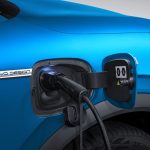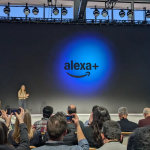
As the U.S. presidential election day commences, tech companies and consumers brace for potential shifts that could reshape both tech prices and innovation. Donald Trump’s aggressive tariff plans could hike up costs on electronics, while Kamala Harris’s more strategic approach may still affect trade and tech regulation. Both candidates are also positioning themselves on AI and future technology, signaling distinct paths for America’s tech landscape.
Trump’s Sweeping Tariff Proposals
Trump’s economic agenda centers on broad, aggressive tariffs, transforming global trade relationships. If re-elected, Trump plans to introduce a 20% tariff on all imports and a staggering 60% tariff specifically targeting Chinese goods. These tariffs would affect a wide range of tech products, given many companies rely on China’s supply chain.
The Consumer Technology Association (CTA) estimates laptop prices could increase by up to 46%, video game consoles by 40%, and smartphones by 26%.
“Trump’s approach has been across-the-board,” said Greta Peisch, former general counsel for the U.S. trade ambassador. Economist Mary Lovely emphasized the consumer impact, saying, “Tariffs are a regressive tax that falls more heavily on less affluent Americans.”
On the other hand, Harris’s approach would likely build on President Biden’s policies. This involves maintaining some tariffs while focusing on targeted measures to protect U.S. interests without imposing blanket hikes.
Ed Brzytwa, Vice President of International Trade at the CTA, voiced industry concerns about this ambiguity: “She has called out [Trump’s] sweeping approach… But what she hasn’t done is disown the current tariffs on the imports of China, which have also been harmful”.
What’s at Stake for Consumers and Manufacturers
Trump’s and Harris’s plans are expected to affect global supply chains. Lovely pointed out that manufacturers using subcontractors in China would face tough choices: “They could ‘raise prices immediately’ or scale back operations, impacting innovation.”
Brzytwa confirmed that the CTA will “continue to be explicit” about proposed tariffs due to their impact on consumers. “At that point, it’s prohibitive to do business with China,” he said, emphasizing that Trump aims more on “blocking imports” than protecting American interests.
The stakes are also high for American consumers. Trump’s plans could increase the average U.S. household’s annual expense to over $2,600, according to Peterson Institute for International Economics. Meanwhile, Harris’s stance is too ambiguous that it might hurt the tech sector which has already been challenged.
In response to the warnings, Trump’s team mostly dismissed the “so-called experts.” In contrast, Harris’s team is open to listening to the experts while still being very hawkish on China.
Visions for AI and Tech’s Future
AI and tech regulation have also emerged as critical issues. Harris pledged to continue the Biden administration’s work, focusing on safe AI development and public protection.
“Harris played a major role in Biden’s approach and landmark Executive Order,” noted Chloe Autio, an AI regulation analyst.
Trump, on the other hand, supports fewer rules to speed up tech growth. He argues that too many regulations hurt U.S. companies and help China. “We will repeal Joe Biden’s dangerous Executive Order that hinders AI innovation,” his campaign stated. While his plan could lead to faster progress, it largely ignores consumer safety.
As the election takes place, whoever takes office will determine the direction of U.S. tech policy. The stakes are high, as these decisions will impact not only consumer prices but also the future of technological growth and global leadership.




















